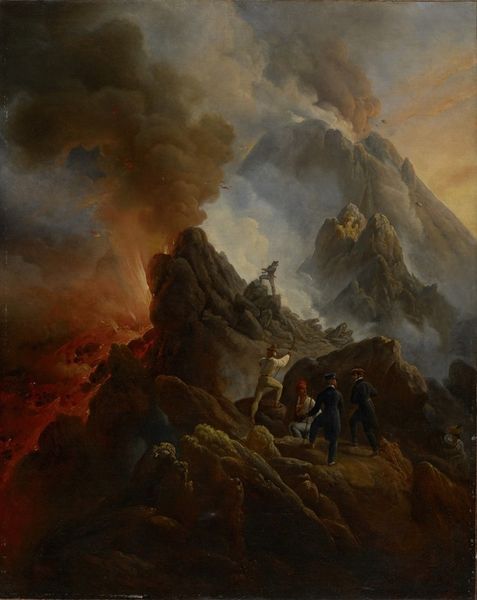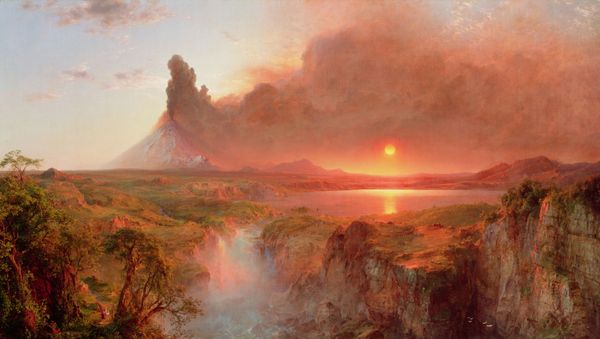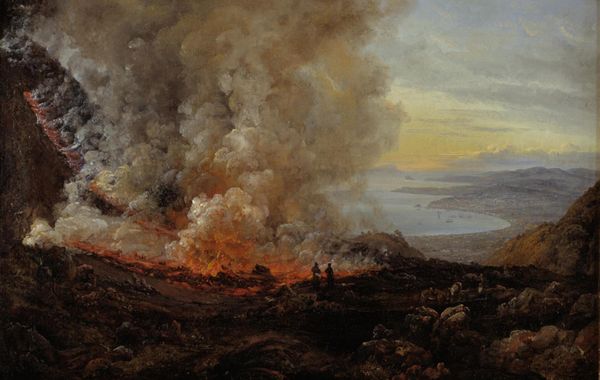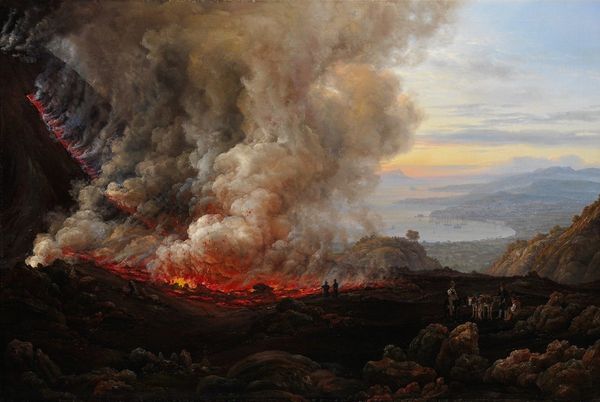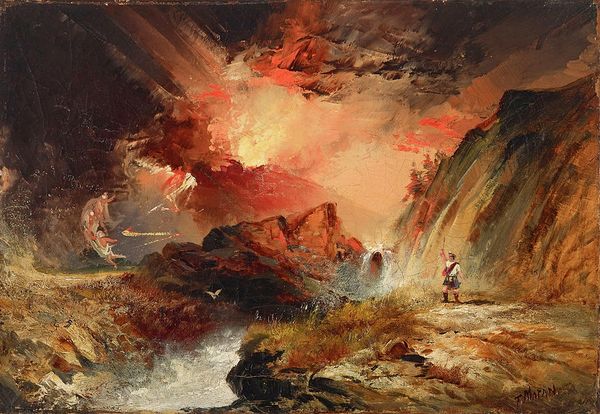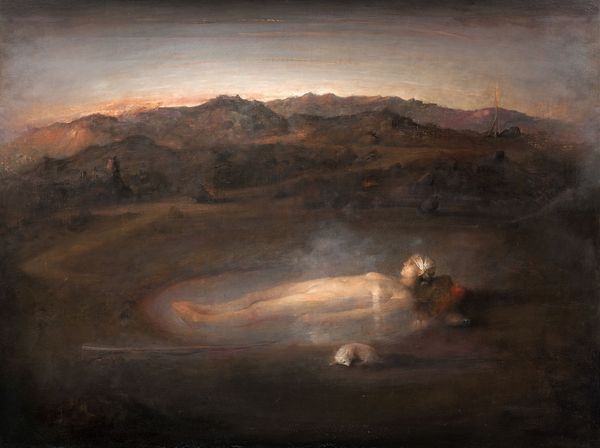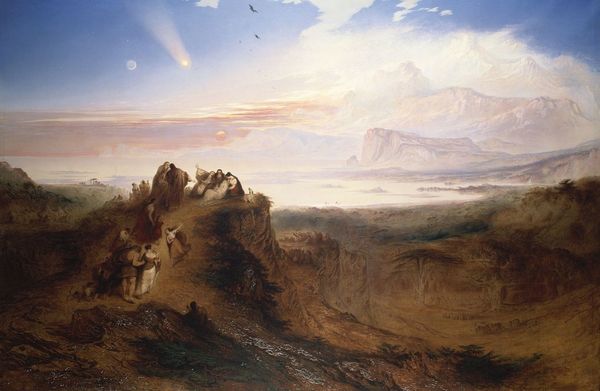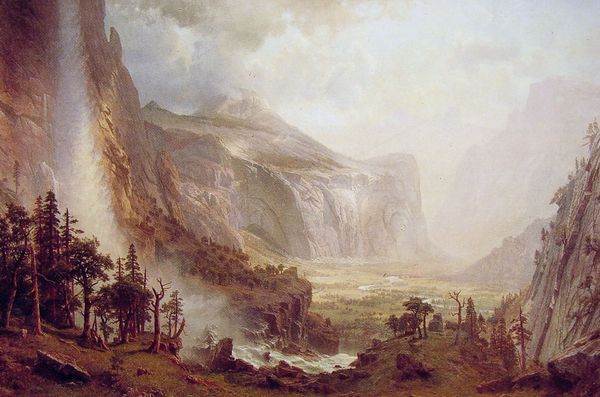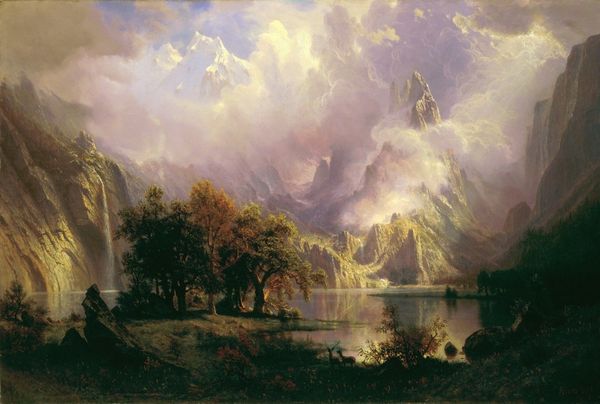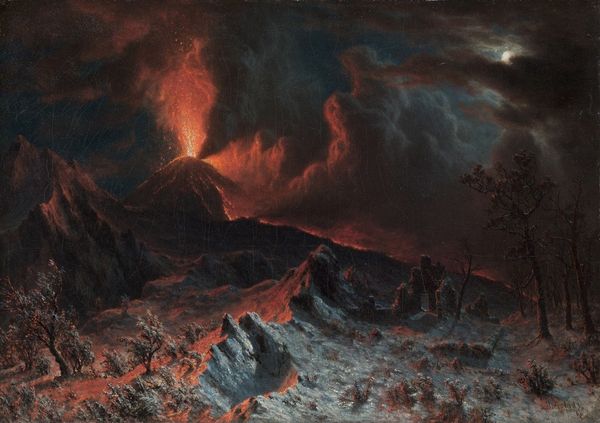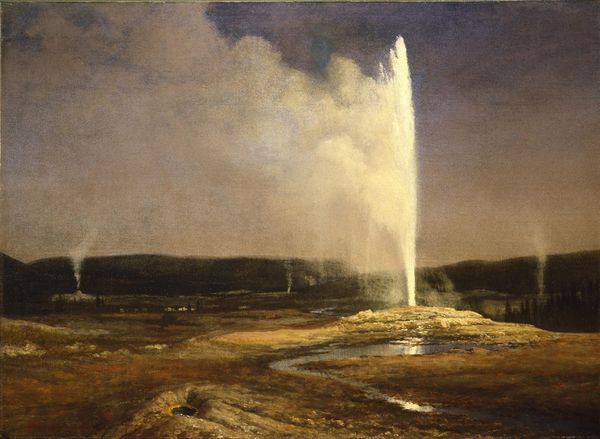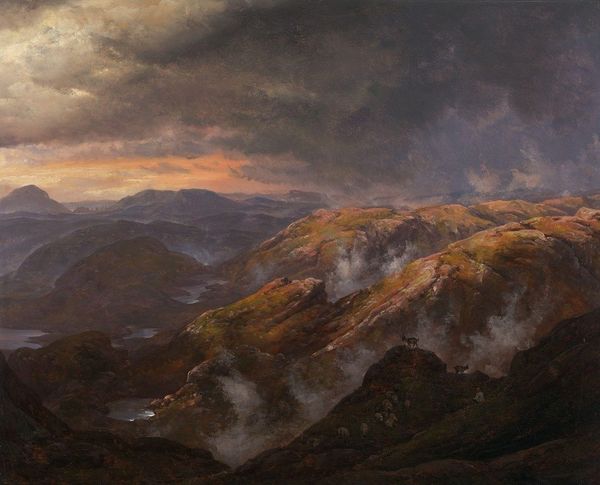
The Eruption of the Great Geyser in Iceland in 1834 1835
0:00
0:00
painting, oil-paint
#
painting
#
oil-paint
#
landscape
#
romanticism
#
realism
Dimensions: 173 cm (height) x 194 cm (width) (Netto), 202.5 cm (height) x 219 cm (width) x 15.5 cm (depth) (Brutto)
Friedrich Theodore Kloss painted "The Eruption of the Great Geyser in Iceland" in 1834. This depiction of Iceland's natural wonder connects to the wider context of Romanticism, where sublime landscapes evoked awe and the power of nature. Kloss's image creates meaning through cultural references of his time. Painted during the Danish Golden Age, the painting reflects Denmark's interest in its territories, including Iceland. The sublime scenery, rendered with dramatic lighting, places nature as superior to mankind. Note the tiny figures dwarfed by the geyser, seemingly in worship of the majestic natural display. Iceland, at the time, was a remote and sparsely populated territory under Danish rule. The painting comments on the era's colonial dynamics and the growing scientific and artistic explorations of distant lands. Understanding this artwork necessitates considering its historical and cultural context. Primary sources like travel journals, scientific reports, and art criticism offer invaluable insights into the painting's meanings, revealing it as a product of its time, shaped by the era's politics and intellectual currents.
Comments
No comments
Be the first to comment and join the conversation on the ultimate creative platform.
